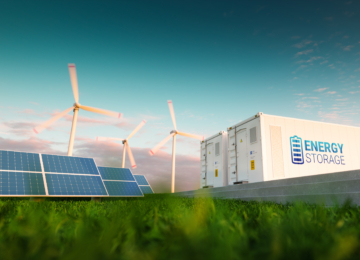Quest for flexibility penetrates heat transition
The heat transition is progressing with difficulty. Fortunately, there have been bright spots recently; steps are finally being made. Public opinion regarding heat networks is cautiously a bit more positive. The industry is expressly looking at electrification options, prompted by rising gas prices. But sustainability obligations from Europe are also contributing to this. Unfortunately, grid congestion is putting a brake on this positivism. Many initiatives are driven by electrification through large-scale heat pumps and electric boilers. And while some nice initiatives are being realized left and right, grid congestion makes it difficult for most parties to electrify on a large scale. Here too, however, energy storage offers a solution!
Heat storage in heat networks
Kalavasta was commissioned by Energy Storage NL (ESNL) and InvestNL to study the potential of heat storage in heat networks. This shows that the cost of heat production is reduced, and CO2 and nitrogen emissions are reduced. More importantly, however, in the context of this column, it notes that incorporating heat storage can reduce the curtailment of production from renewable sources - curtailment. This is by starting to produce and store heat for later use in moments of lower power demand - load shifting.
Practical examples are now available. For example, Eneco has applied heat buffering in an existing heat network in Utrecht and Nieuwegein. Devo is also applying heat storage in a new heat network for 900 newly built homes in Veenendaal.
Flexibility potential
Heat storage has the characteristic of always being deployed locally: as close to the user as possible. The same applies to the conversion of electricity to heat; Power2Heat. This often involves medium-voltage connections. This creates flexibility for the customer, which is ideal for load shifting. In that case, more power is purchased during off-peak hours. It offers the possibility of seriously increasing the utilization rate of the electricity grid. An additional advantage is that with most thermal storage technologies it is relatively easy to make the step from 4-hour to, say, 24-hour storage. This since most of the investments have already been made - power-related components. So increasing storage capacity offers a great opportunity to increase flexibility.
Outlook
There are still few financial incentives for load shifting. An example could be time-ofuse tariffs extended to the medium-voltage grid. The initiatives that are in place come mainly from solving congestion problems with alternative transmission rights (atr's), and operators anticipating. Additional incentives are needed to achieve realistic business cases, and scale. But all in all, there are enough brackets to be confident that the heat transition will really take off, in part through deployment of storage. The flexible electrification of the demand for heat gives industry and the building sector new scope and offers great opportunities for 'BV Nederland'.
Siebe Geerts
Advisory Board member Energy Storage NL
This column was published in Storage Magazine March 2025





